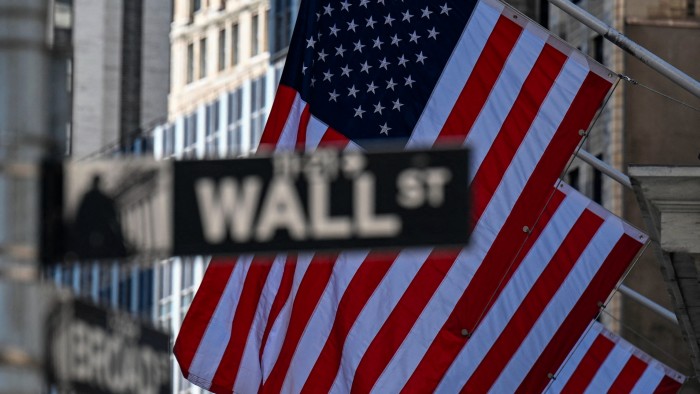Unlock the Editor’s Digest for free
Roula Khalaf, Editor of the FT, selects her favourite stories in this weekly newsletter.
Given the recent thumping their portfolios have taken, investors could be forgiven for thinking that equities must now be factoring in a lot of downside risk. False hopes help no one, however. US stocks are barely out of the starting gate when it comes to pricing in an economic downturn.
From their mid-February peak to their low on April 8 — the day before US President Donald Trump announced a 90-day pause on his so-called reciprocal tariffs — the S&P 500 tumbled 19 per cent. It could have been worse: market darlings Nvidia and Apple were off about 30 per cent over that time. The subsequent relief rally has cut the index’s loss to 12 per cent.
That’s not a big drop, by historical standards. On average, the S&P 500 drops 37 per cent peak-to-trough in a recession, according to a JPMorgan Chase analysis of the five that have happened since 1980.
What’s more, the US stock market was highly valued to begin with. The fall typically lowers prices from 16 to 11 times expected earnings, with the shallowest recession taking them to 14 times. At last week’s trough, though, the benchmark was still trading on 18 times analysts’ 2025 earnings per share forecasts, based on FactSet data.
None of this factors in that consensus earnings forecasts typically lag economic news. Today, analysts are still factoring in growth compared with last year. JPMorgan boss Jamie Dimon has predicted forecasts would shrink 5 per cent. Lop that off expectations, and put the index on 11 times earnings, and that implies a more than 40 per cent fall to come.
Whether Trump’s trade tariffs and the chaos surrounding them are enough to turn the economic softening that was under way into an outright recession is open for debate. The president has already paused the worst of the levies and offered consumer electronics a reprieve. More sectors could follow. Hard numbers such as jobs data suggest the US economy is still firm, though softer ones such as consumer sentiment show worrying slumps as well as rising inflation expectations.
The longer the uncertainty lasts, though, the bigger the risks. Companies are increasingly dropping their earnings guidance for the coming months, citing trade turmoil. Job cuts and investment pauses must be under consideration. Wells Fargo boss Charles Scharf said on a call last week that the bank was monitoring credit drawdowns “really, really closely”. That’s practical, but not a phrase to set alight the hearts of his more ambitious commercial clients.
The US practice of recessions only being official when called by the National Bureau of Economic Research can mean a large lag between the economy weakening and perceptions and confirmation of an R-word event catching up. That happened in 2007-08. Investors have to use their judgment in the meantime. They should keep in mind that, despite the bruising moves, much downside has yet to be factored in.
jennifer.hughes@ft.com
https://www.ft.com/content/64b72391-ccaa-487b-9593-acab2106aa4f


